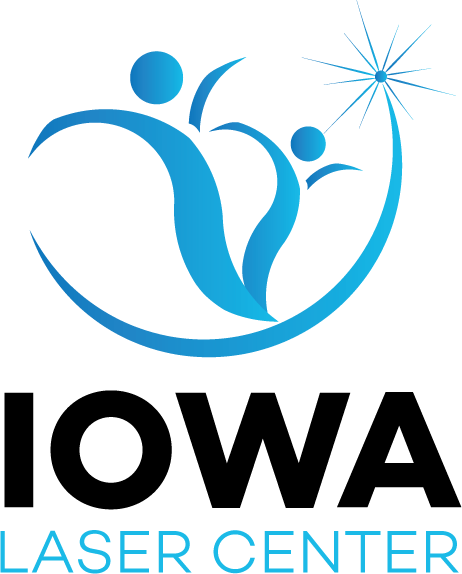Laser Therapy
How Does Laser Therapy Work?
- Adenosine Triphosphate (ATP): ATP is functionally the energy storage molecule for the human body, used in virtually all of the biochemical processes that allow us to function. This includes processes that help our bodies to grow and heal.
- Reactive Oxygen Series (ROS): ROS is a mild oxidant that is essential in the gene transcription process, which is a critical part of cellular repair and healing.
- Nitric Oxide (NO): Nitric oxide is an essential molecule in the body’s cellular communication system, helping transmit signals through the body, which can help improve overall body healing. Nitric oxide is also helpful in dilating blood vessels to improve circulation.
Erchonia FX 635 Laser Treatment
- Neck and low back strains
- Rotator cuff and frozen shoulder
- Little league elbow and tennis elbow
- Carpal tunnel
- Anterior hip and groin pain, even from DJD
- Knee pain, even chronic from surgeries or knee replacements
- Ankle and foot injuries
- And simple neuro protocols for concussion and neurodegenerative support
- Plantar Fasciitis
- Post-Operation Wound Healing
There are thousands of symptoms and diseases but only 14 systems in the body.
- Circulatory System
- Digestive System
- Endocrine System
- Excretory System
- Fascial System
- Immune System
- Integument System
- Lymphatic System
- Meridian System
- Muscular System
- Nervous System
- Reproductive System
- Respiratory System
- Skeletal System
The Erchonia FX 635 Cold Laser Therapy is used to treat the following conditions/symptoms. Keep in mind, all cells have mitochondria and if stressed or diseased the mitochondria are injured, and they cannot keep up with the demands. Low-Level Laser Therapy helps the mitochondria produce energy (ATP) necessary for injured cells to heal and regenerate.
A
Abdominal Cramping
Abdominal Inflammation/Pain
Abrasions
Abscess
Achilles/Tear Strain
Acidosis (hyperacidity)
Acid Reflux
Acute Injury
Ademoids
Attention Deficit Disorder (ADD)
Hyperactivity Disorder (ADHD)
Addison’s Disease
Adhesions
Adrenal
Allergies
Alpha Waves
Alzheimer’s
Amnesia
Amyotrophic Lateral Sclerosis/Lou Gehrig’s Disease/Motor Neuron Disease
Anemia
Anxiety
Appendicitis
Arteries/Arteriosclerosis
Arthritis
Asthmas
Atrophy
Autism
B
Back pain
Bacteria
Balance Problems
Bed Sores
Bedwetting
Bell’s Palsy
Beta Waves
Bites
Bladder
Bloating
Blood Pressure (High)
Blood Pressure (Low)
Blood Sugar Balance
Boils
Bone
Bradycardia
Brain
Breast Augmentation
Bronchitis
Bruises
Buerger’s Disease
Bunions
Burns
Bursitis
C
Calcium Deposits or Formations
Candida
Canker Sores
Capsulitis
Carpal Tunnels Syndrome
Cartilage
Chickenpox (Herpes Zoster/Varicella)
Chronic Fatigue
Chronic Pain
Circulation
Cirrhosis
Cleansing the Blood
Cold Sores (Herpes Simplex 1)
Colitis
Concussion
Confusion
Congestion
Conjunctivitis (Pink Eye)
Constipation
Cramps (Muscle)
Cranial Nerves (General)
Crepitus
Crohn’s Disease
Cuts
Cushing’s Syndrome
Cysts
Cytomegalovirus (Herpes Simplex 5)
D
Deer Tick
Delta Waves
Dementia
Depresson
Dermatitis
Detoxification
Diabetes (Blood Sugar Balance)
Diabetic Neuropathy
Diabetic Ulcers
Digestion
Disc Herniation
Dizziness
Dupuytren’s Contracture
Dyslexia
E
Earache
Ear Infection
Eczema
Edema
Emotional Stress
Emphysema
Endometriosis
Enuresis (Incontinence)
Epistaxis (Nosebleed)
Espstein – Barr Virus
Esophagitis
Exercise Recovery
F
Facet Syndrome
Facial Paralysis
Fatigue
Fever
Fever Blisters
Fibromyalgia
Flu
Food Poisoning
Fractures
G
Gait
Gallbladder
Gamma Waves
Ganglion Cyst
General Neuro-Musculoskeletal
GERD
Gluomerulonephritis
Goiter – Thyroid (Hypo)
Gout
H
Hair Loss
Headache
Hearing Difficulty
Heartburn
Heartburn due to Helicobacter Pylori
Hepatitis A
Hepatitis B
Hepatitis C
Hernia
Herpes Simplex 1
Hives
Hoarseness
Hormone Balance
Hot Flashes
Hyperthyroid/Hypothyroid
Hyperglycemia/Hypoglycemia
I
Immune Enhancement
Impotence
Incontinence (Enuresis)
Indigestion
Infection
Inflammation
Inflammatory Bowel Disease/Irritable Bowel Syndrome
Influenza
Injuries (Acute)
Insect Bites
Ischemia
J
Juandice
Joints
K
Keloid
Kidneys
Kidney Stones
L
Large Intestine
Laryngitis
Ligament
Liver (Balance & Support)
Low Back Pain
Lungs
Lyme Disease
Lymphadenitis
Lymphatic
M
Memory Problems
Meniere’s Syndrome
Meniscus Sprain
Menopause
Mental Fatigue
Migraines
Motion Sickness
Multiple Sclerosis
Muscle
Muscle Spasm
Musculoskeletal (General)
N
Nausea
Neck Pain
Nerve Root
Neurogenic Inflammation
Neuro-Musculoskeletal (General)
Neuropathy
Nervousness
Nosebleed
Numbness
O
Olfactory Nerve
Osgood – Schlatter Diseases
Osteoarthritis
Osteoporosis
Otitis
P
Pain (Chronic, General or Acute)
Pancreas
Parasites
Parasympathetic Facilitation
Parasthesia
Parkinson’s
Plantar Fasciitis
Pneumonia
Polycystic Kidney Diseases
Polycystic Ovary
Postoperative Scar Revision
Postoperative Wound Healing/Pain
Post Traumatic Stress Disorder
Postnasal Drip
Pre-Op
Prostate
Psoriasis
Punctures New Paragraph
R
Rash
Reflex Sympathetic Dystrophy (RSD)
Rehab/Strength
Renal Problems
Respiratory Problems
Restless Leg Syndrome
Retinitis Pigmentosa
Rheumatism
Road Rash
S
Scar Tissue
Sciatica
Seizures
Shingles
Shoulder Pain
Sinusitis
Small Intestine
Sore Throat
Soreness
Spasm
Spastic Ataxia
Spider Veins
Spleen
Sprains
Staph Infection
Stem Cells
Stings
Stomach/Stomach Ulcer
Strain
Strep Infections
Stress
Stroke
Subluxation
Swimmer’s Ear
Swollen Ankles
Sympathetic Cooling
T
Tendonmyopathy (Tendonitis)
Tension Headaches
Theata Waves
Thoracic Outlet Syndrome
Throat
Thrush
Thyroid (Hyper & Hypo)
Tinnitus
TMJ
Tonsillitis
Traumatic Brian Injury
U
Ulcer
Ulcerative Colitis
Urinary Tract Infection
V
Varicose Veins
Vertigo
Viral Infections
Voice
Vomiting
W
Water Retention
Warts
Wounds
Y
Yeast
